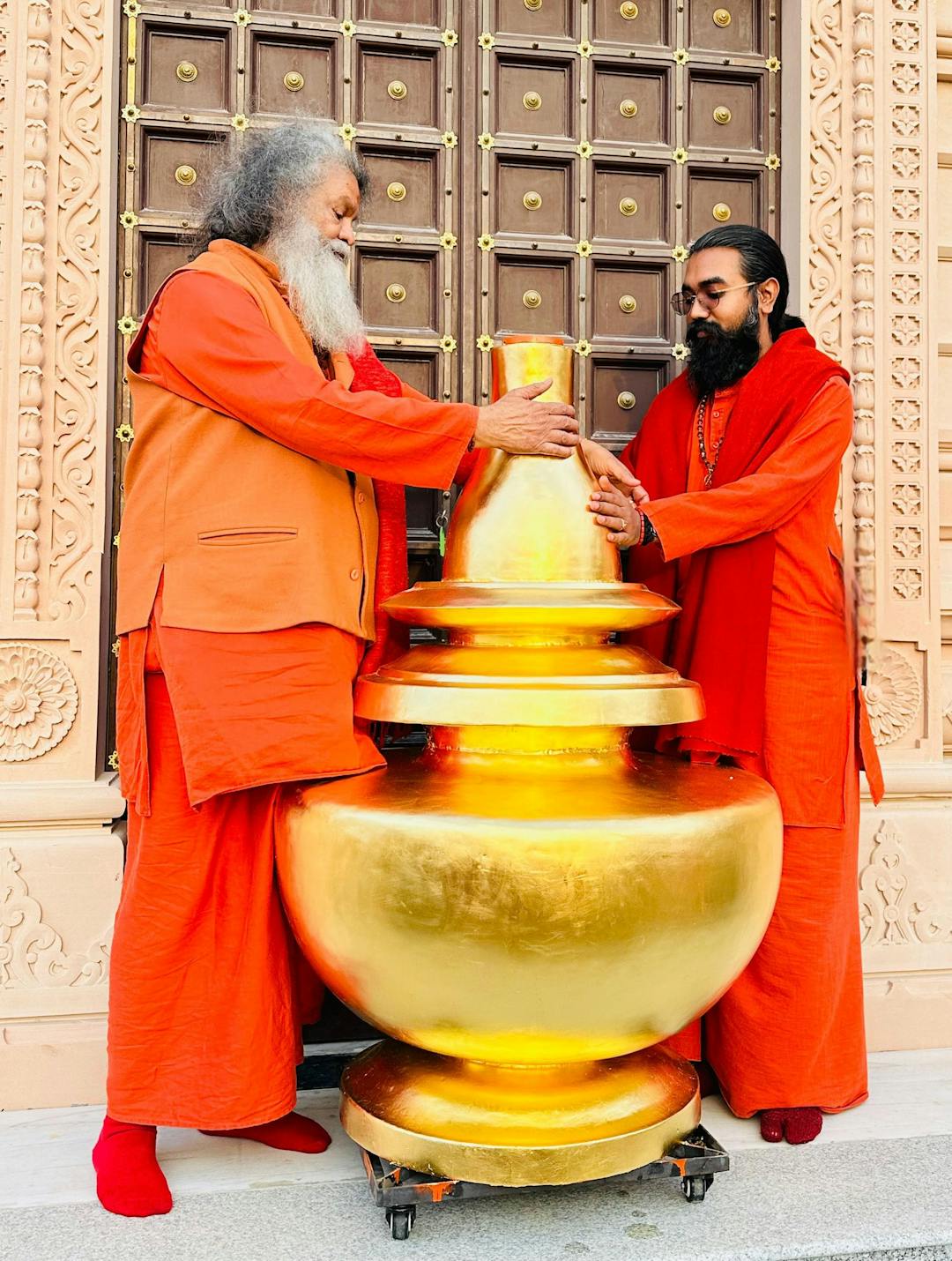
Kalash
In Hindu temples, placing a golden Kalash (pot or urn) at the top, typically on the temple's spire or shikhara, holds deep symbolic and religious significance. In Om Ashram we are putting kalashes gilded (decorated) with gold leaves on the top of important places.
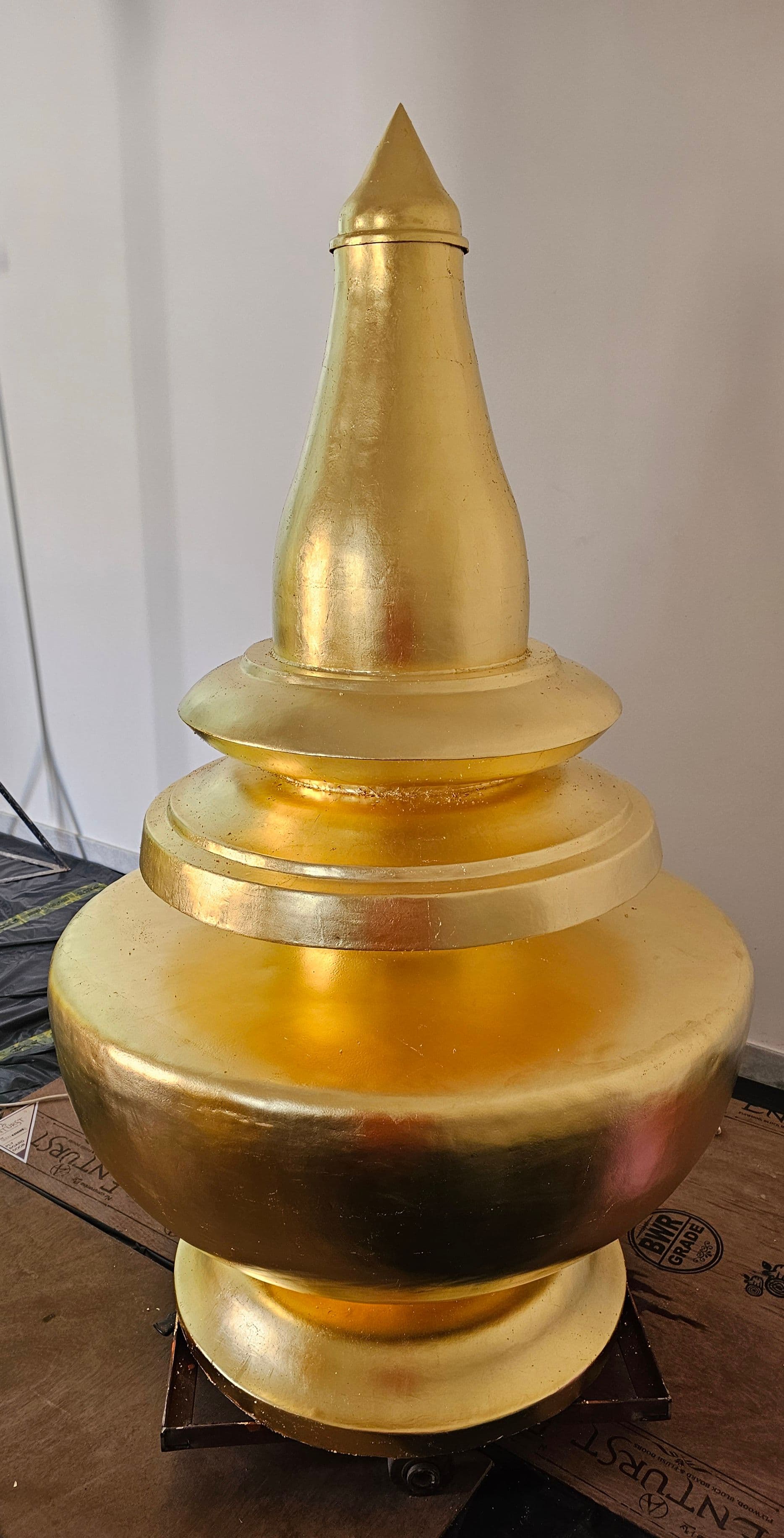
Symbol of Auspiciousness
The Kalash is considered a symbol of abundance, wisdom, and immortality. It's often associated with the goddess Lakshmi, who brings wealth and prosperity.
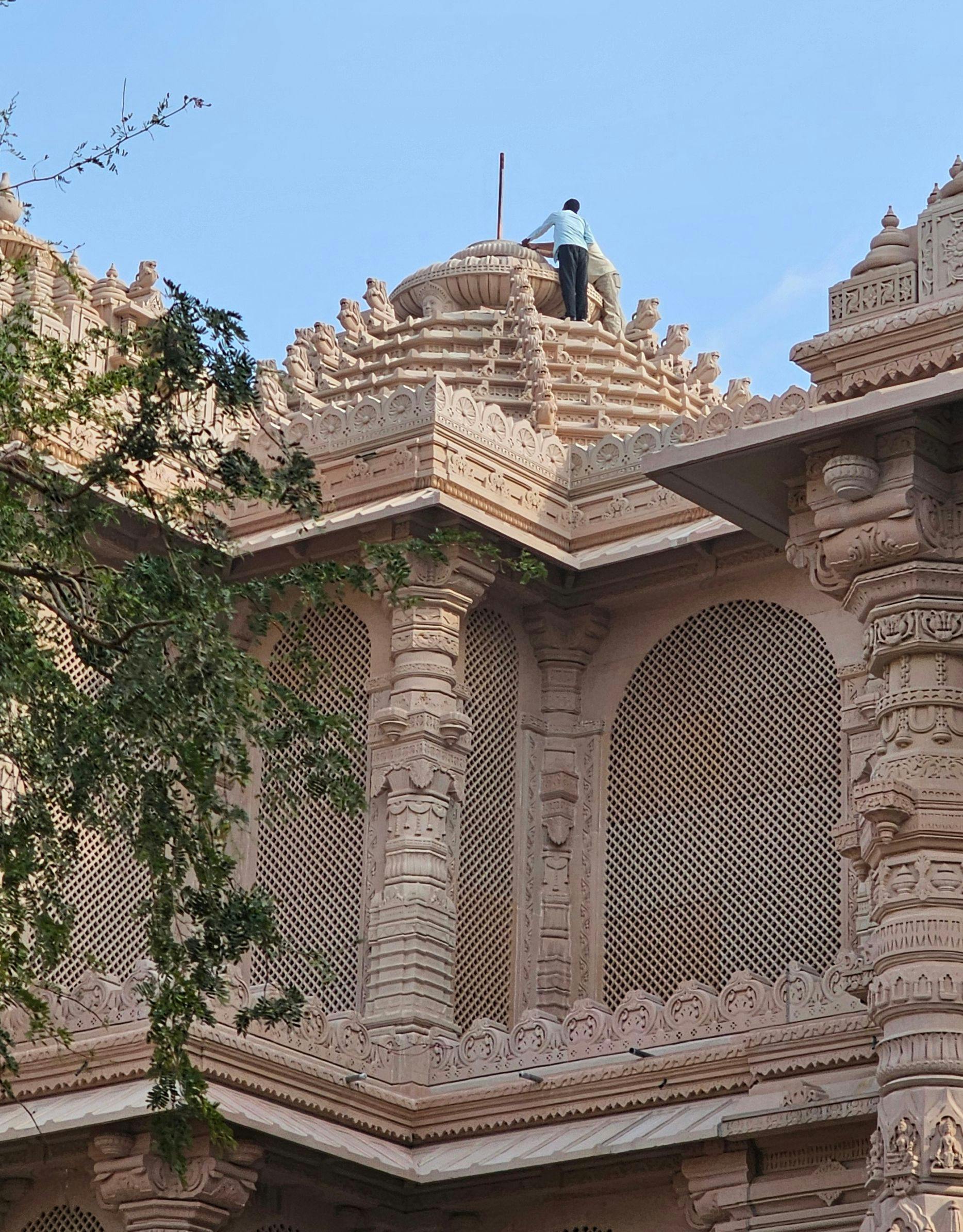

Cosmic Symbolism
The structure of the Kalash represents the cosmos. The base of the pot symbolizes the earth, the middle the space (sky), and the opening at the top the heavenly realm. This reflects the Hindu belief in a connection between the earthly and the divine.
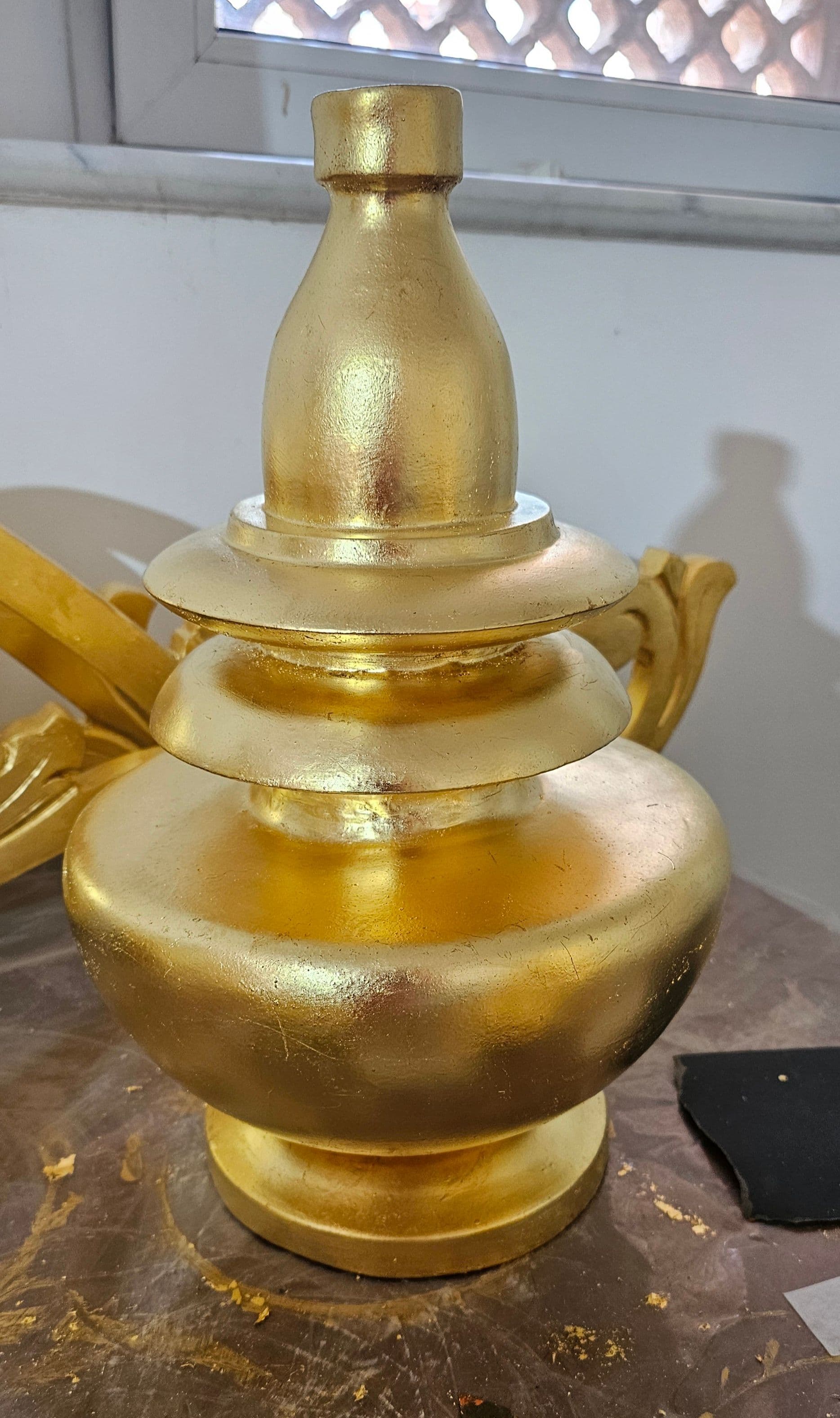
Spiritual Significance
The Kalash on top of the temple signifies the highest point of the temple, closest to the heavens. It's believed to be a point where divine energies converge and are disseminated across the temple.
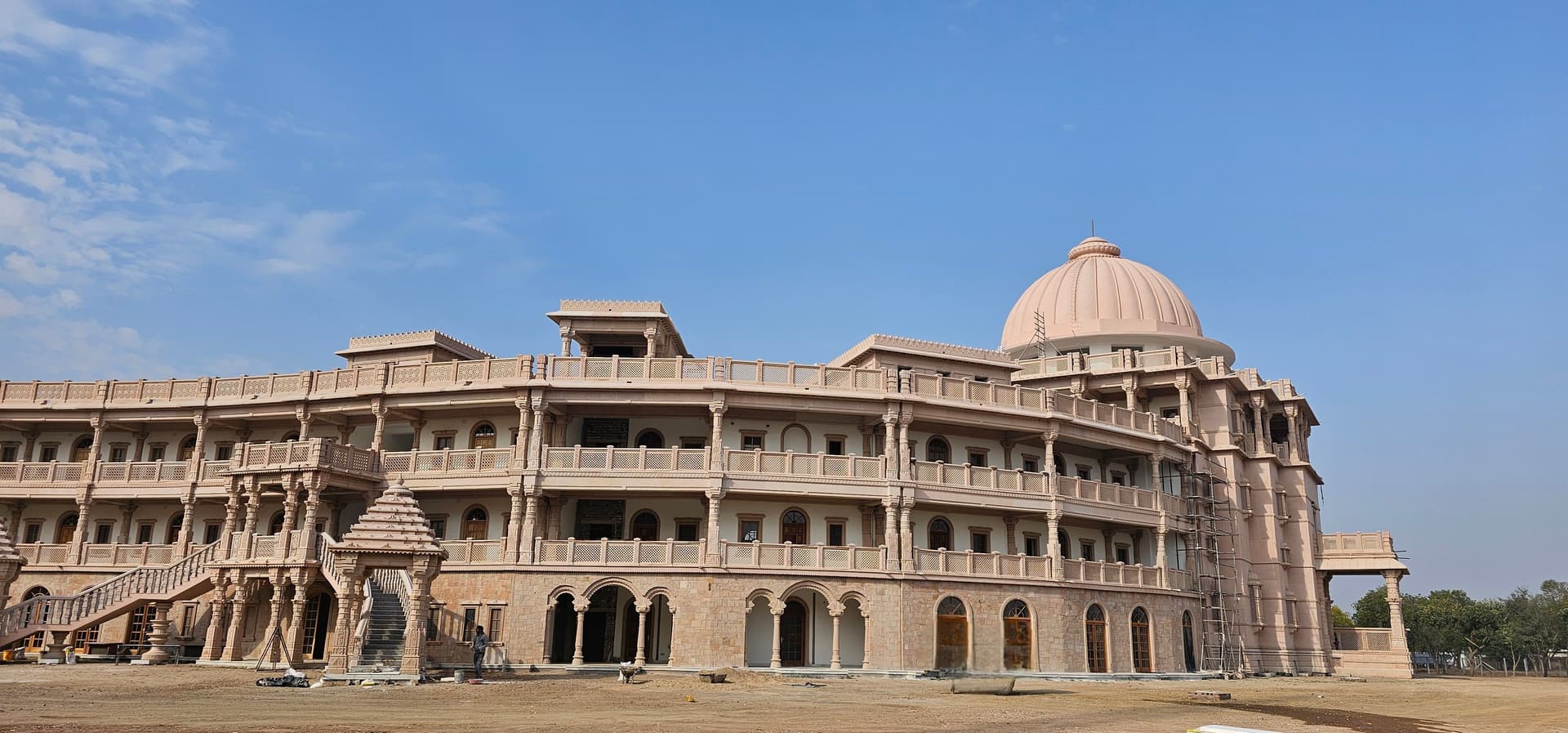
Aesthetic and Architectural Value
Besides its religious significance, a golden Kalash also adds to the architectural beauty and grandeur of the temple.
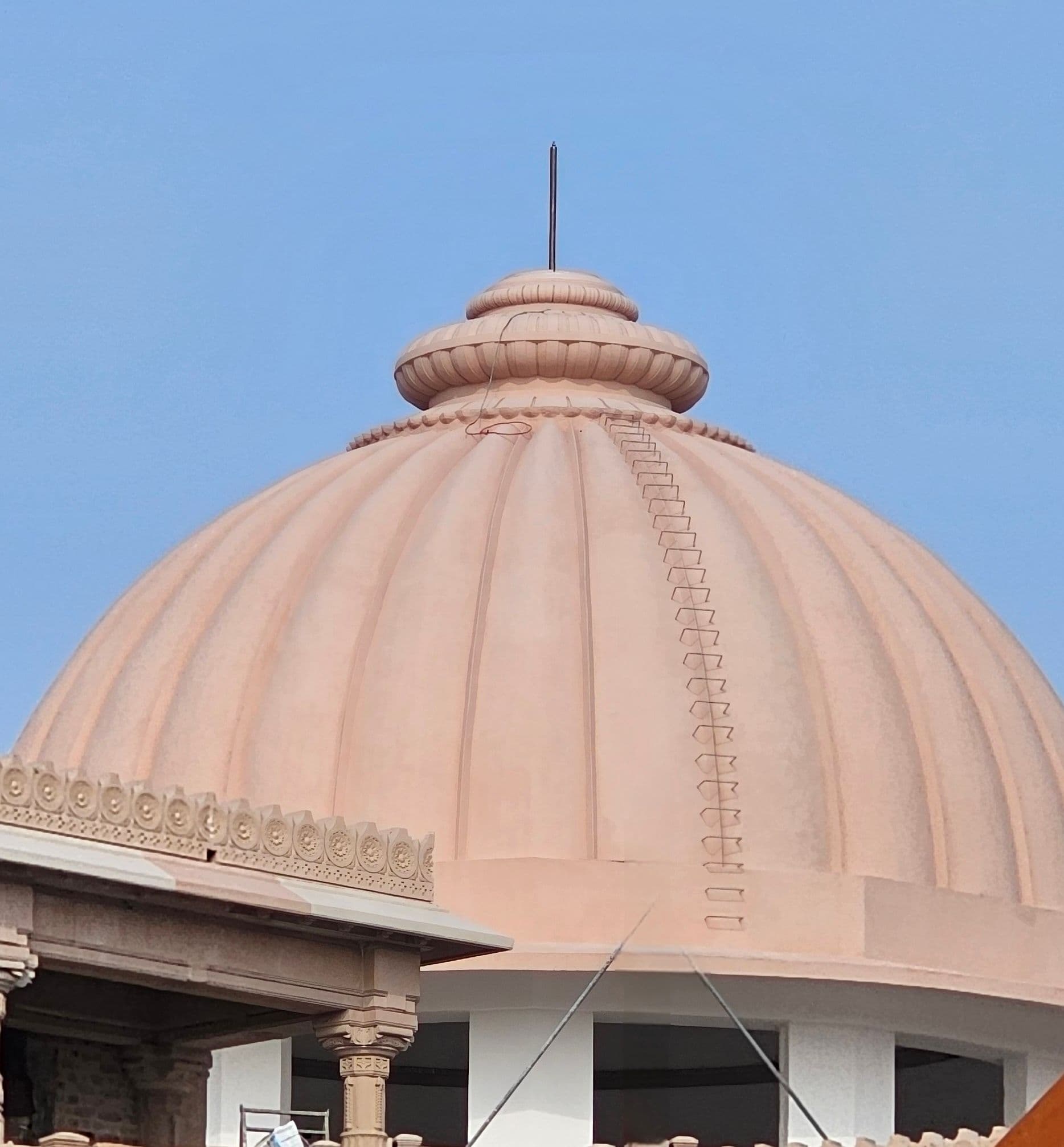
Material Significance
The use of gold, a precious and enduring metal, signifies both the temple's sacredness and the desire to offer the best to the deities worshipped within.
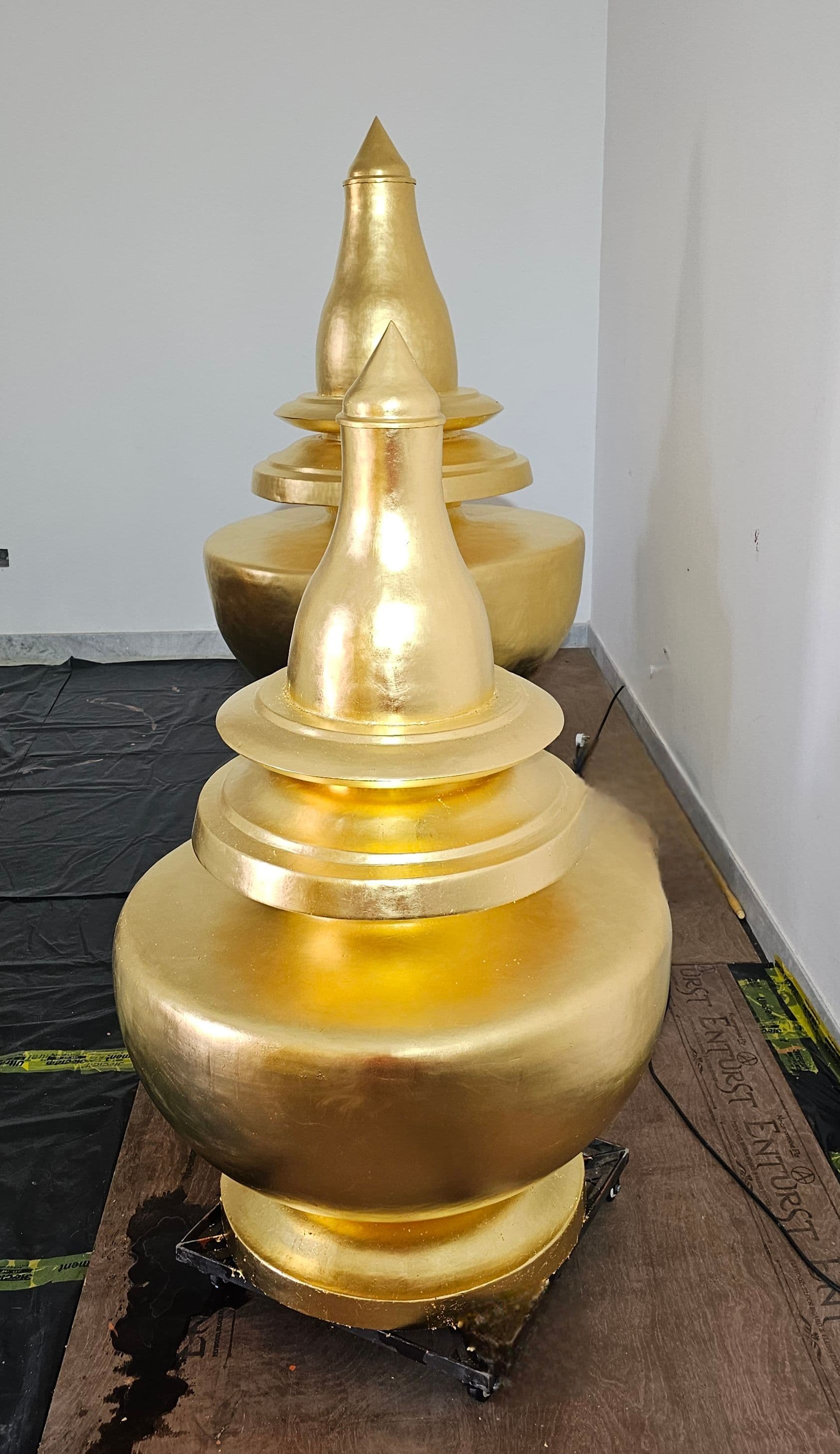
In essence, the golden Kalash on top of a temple is not just an ornamental feature, but a deeply spiritual and symbolic element integral to Hindu temple architecture and ritual.



